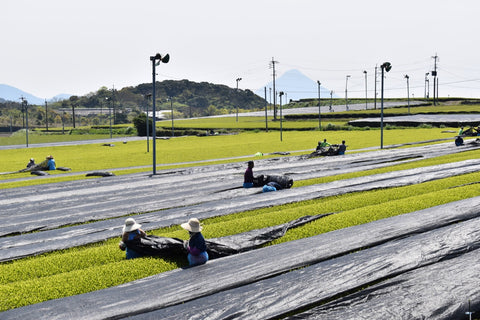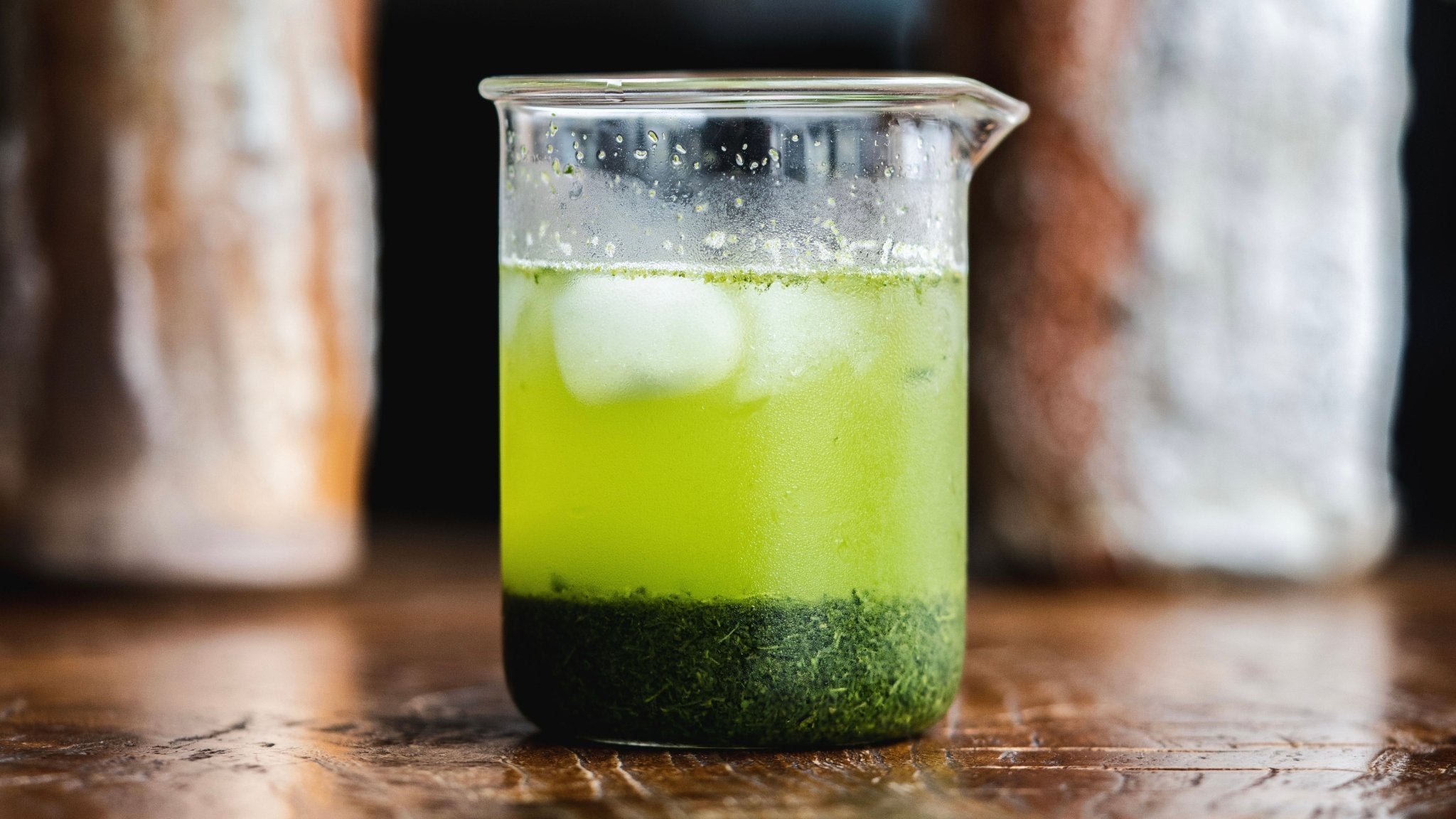Our Steamed Tea Club subscribers receive a few packs of steamed green tea (e.g. sencha, kabuse, tamaryoku...) every month. If you want to explore our monthly offerings or if (as as subscriber) you want a few extra packs of tea, please get them here.
OCTOBER 2025 OFFERING:
Released on the eve of this year’s autumn moon, this tea celebrates nature and the season’s harvest. Grown on a secluded farm, fully exposed to sunlight and lightly steamed, it produces a particularly sweet, golden brew. While many of Japan’s top producers aim for maximum umami through shading and longer steaming, Masuda’s San seeks to capture the mountain’s aroma in the purest way possible, using no pesticides or synthetic fertilizers. Small twigs accompany the juicy leaves, adding an extra layer of flavor. We recommend brewing at slightly higher temperatures with very short steeps.
Tea: 4g
Water: 150g @ 75°C
Time: 20"
10.25 #1: Golden Aracha, Yabukita
- Origin: Mt. Shiba, Shimada, Shizuoka, Japan 34.9°N / 138.2°E
- Cultivar: yabukita (金谷みどり) is a Japanese tea cultivar originally identified in the 'Kanaya' area of Shizuoka; it is know for rich umami and mild astringency. It is usually picked before yabukita, and is a common choice for sencha, kabusecha and gyokuro.
- Harvest: May 2025
- Grower: Masuda
10.25 #2: Golden Aracha, Okuhikari
- Origin: Mt. Shiba, Shimada, Shizuoka, Japan 34.9°N / 138.2°E
- Cultivar: Okuhikari (おくひかり) is a hybrid of Yabukita (sinensis) and a C. Sinensis v. assamica cultivar. It is late budding and relatively frost resistant. It is typically chosen for fresh sencha.
-Harvest: May 2025
- Grower: Masuda
SEPTEMBER 2025 OFFERING:
09.25 #1: Yame Shincha, Kanayamidori
- Origin: Yame, Fukuoka, Japan 33.2°N / 130.5°E
- Cultivar: kanayamidori (金谷みどり) is a Japanese tea cultivar originally identified in the 'Kanaya' area of Shizuoka; it is know for rich umami and mild astringency. It is usually picked before yabukita, and is a common choice for sencha, kabusecha and gyokuro.
-Harvest: early May 2025
09.25 #2: Yame Shincha, Okuhikari
- Origin: Yame, Fukuoka, Japan 33.2°N / 130.5°E
- Cultivar: Okuhikari (おくひかり) is a hybrid of Yabukita (sinensis) and a C. Sinensis v. assamica cultivar. It is late budding and relatively frost resistant. It is typically chosen for fresh sencha.
-Harvest: mid May 2025
For the richest umami experience, please brew 4g of tea in 120ml of water at 55°C over 180". For a super refreshing thirst quenching drink, please cold brew (8g / 750ml) at 2°C (standard refrigerator temperature) over 12 hours.
ABOUT THE CREATOR OF THIS TEA:
Oishi San's tea factory was established in 1940, a very turbulent period in Japan's history. The company has flourished; Oishi San owns tea fields in the region, but also sources leaves from a wide diversity of micro-farmers, finishing the tea at his facility in Yame.
Defining Sencha:
Sencha (煎茶) is the most popular style of Japanese ryokucha (緑茶), or green tea. Sencha represents roughly 80% of the tea production in Japan. It is loosely defined as:
- Premium, early harvest leaves.
- Processed with steam, rolled in the shape of fine needles, and dried.

Why is Japanese green tea greener than its Chinese (and Korean) counterparts?
We hear this statement very often, and it’s a very broad generalization. There are two very popular ways to ‘kill the green’ (i.e. stop the oxidization process) in green tea:
Steaming: used in Japanese sencha (but also known to be used in some traditional Chinese green tea, as in the province of Hubei).
Pan-firing: used in the vast majority of Chinese green tea styles… but also in kamairicha, a style of tea that is popular in Miyazaki, Kochi, and a few other places in Japan.
Steaming, broadly speaking, yields a more intensely green tea, usually with more oceanic notes. Pan-firing yields a lighter coloured tea with nuttier, more gentle notes.
In our humble opinion, neither is outright better than the other. Both can express tea leaves beautifully.
What about gyokuro and kabusecha?
Both of these can be considered sencha; the tea is steamed, rolled, and dried. What makes them special happens before the leaves are harvested.
Kabusecha (かぶせ茶): a cover is placed right on top of the tea trees for (usually) 7-10 days; growing in shade, the tea leaves become more intensely green and richer in umami. As far as we know, there is no hard limit on the number of days that the trees can be covered; we know a couple of farms that may shade their trees for about three weeks.

Gyokuro (玉 露): this tea is usually more expensive than its kabuse and non-shaded counterparts. Just like for matcha, a canopy is built over the tea trees to prevent direct sunlight from reaching them; usually, gyokuro is shaded for a significantly longer time than kabusecha. 3-4 weeks is not uncommon.
Our tea from Furuichi San, both Chiran Shincha and its 100% okumidori counterpart, are kabusecha. That explains their very rich taste and colour.






